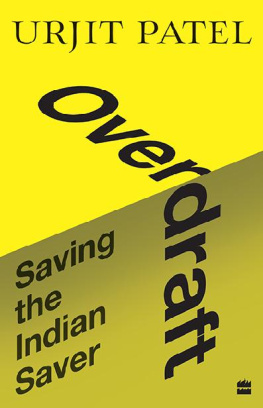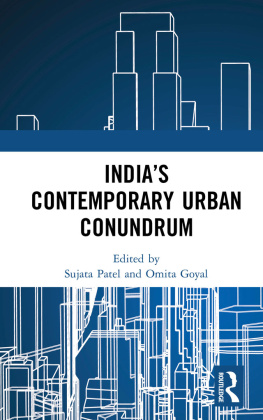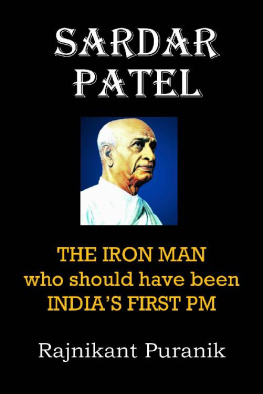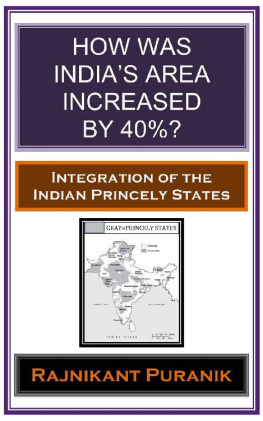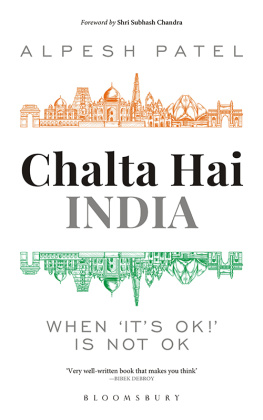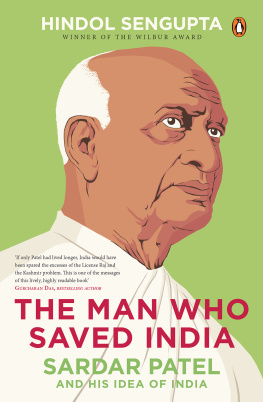Table of Contents
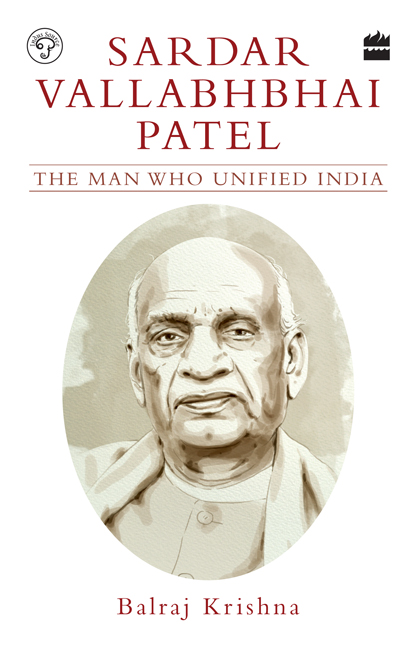

Viceroy Lord Wavell to Under Secretary of State Arthur Henderson:
Vallabhbhai Patel, Indias Bismarck, the man of iron from Gujarat...
*
Viceroy Lord Mountbatten to Sardar Patel:
You have for years been the strong man of India... I do not believe there is one man in the country who would stand up to you when you make up your mind.
*
J. R. D. Tata on the Gandhi-Nehru-Patel Troika:
While I usually came back from meeting Gandhiji elated and inspired but always a bit sceptical, and from talks with Jawaharlal fired with emotional zeal but often confused and unconvinced, meetings with Vallabhbhai were a joy from which I returned with renewed confidence in the future of our country. I have often thought that if fate had decreed that he, instead of Jawaharlal, would be the younger of the two, India would have followed a very different path and would be in better economic shape than it is today.
To my brother
Yuvraj Krishan
(ever supportive & inspiring -
his great admiration for Sardar)
CONTENTS
P atel, along with Gandhi and Nehru, was a leading member of the triumvirate which conducted the last phase of Indias freedom struggle. He was the saviour and the builder. Non-violently, he demolished the princely order Lord Wellesley had created; and in January 1946, he had nearly buried Pakistan in Karachi. Post-independence, Patel was the creator of New India just as Surendranath Banerjea was the father of political consciousness to the newly educated class of Indians in the 19th century; and Gandhi, the father of mass awakening pre-independence.
(a) Saviour: Patel saved India from the machinations of the ruling British, and thereby did not allow large Hindu majority areas to fall into the hands of Jinnah. In 1946, in an undivided India, the Cabinet Mission was giving away to Jinnah a Pakistan comprising the whole of Punjab and Bengal, besides Hindu Assam, as fully autonomous parts of Groups B and C. Gandhi favoured the plan since it preserved Indias unity. In his paternal pride as Congress president, Azad seemed totally committed, confident of securing Congress acceptance. He thought that it would not only keep India united, but also safeguard Muslim interests. Nehru, however, voiced his opposition to grouping, as it related to the NWFP and Assam. He even suggested that there was a big probability that there will be no grouping. Patel was more blunt than others in telling Wavell that the missions proposed solution was worse than Pakistan, and he could not recommend it to Congress.
Indias partition, as conceived by Churchill in 1945 as Britains prime minister, was implied in Attlees policy statement of 20 February 1947. It clearly meant the creation of Pakistan in one form or other, but in a divided India. Under it, too, Jinnah was to get the whole of Punjab, Bengal, and Assam. Patel immediately countered it with a policy statement on behalf of the Congress, demanding a division of Punjaband of Bengal by implicationthereby saving Assam for India. Assam was predominantly Hindu, whereas in Bengal the Hindus were 49% as against 51% Muslims.
(b) Builder: Attlees statement of 20 February categorically stated transference of power to the princely states, simultaneously with India and Pakistan, thus making the princes completely independent on 15 August. This would have led to the creation of a Third Dominion, comprising confederations of princely states, and thereby throwing open possibilities of some of the states going over to Pakistan, in association, if not accession. This book discusses some of the conspiracies hatched in that direction, which Patel scotched with rare boldness, backed by his towering personality that exuded unquestioning friendliness towards the princes. The states involved were major ones like Travancore, Hyderabad, Junagadh, Jamnagar, and Jodhpur, and some Central Indian states. Through his diplomatic manoeuvres, Patel secured accession of all states prior to 15 August, before they could be made independent on par with India and Pakistan, thereby gaining equal status. The exceptions were those of Junagadh and HyderabadKashmir too, but it was under Nehrus charge.
On the ashes of a defunct empire, Patel created a New Indiastrong, united, put in a steel-frame. That frame was the Indian Administrative Service, which kept a subcontinent bound together as a single unit despite disparities of politics and economy. As saviour and builder, Patel played decisive roles that took India to new pinnacles of success and glory after centuries.
Yet, the saviour and builder of New India was accused of responsibility for the partition of India; and the assassination of Gandhi. Patel never asked for Indias partition. He and other Congress leaders were opposed to it. It was thrust upon them by the British through Attlees policy statement of 20 February. He merely served Indias interests by making partition conditional upon division of Punjab and Bengal. He could not have left the Punjabi and Bengali Hindus, as well as the Sikhs, to the cruel mercies of the Muslim League after the genocide of August 1946 in Kolkata. He also looked beyond, in gaining a free hand in the integration of over 560 States.
About Gandhis assassination, General Roy Bucher, the British commander-in-chief of the Indian Army, wrote to the author in his letter of 24 July 1969: From my knowledge, I am quite sure that Maulana Azads charge that Sardar Patel was responsible for the murder of the Mahatma was absolutely unfounded. At our meeting in Dehra Dun, the Sardar told me that those who persuaded the Mahatma to suggest that monies (Rs. 55 crore) held in India should be despatched to Pakistan were responsible for the tragedy, and that after the monies had been sent off, the Mahatma was moved up to be the first to be assassinated on the books of a very well-known Hindu revolutionary society. I distinctly remember the Sardar saying: You know quite well that for Gandhiji to express a wish was almost an order. It was on Gandhis insistence that security had been withdrawn.
Gandhi commanded every Hindus veneration, Godse being no exception. He had bowed to him in reverence thrice before firing the shots. Gandhi had exhausted the patience of even Nehru and Patel over two of his impossible demands. First, asking Mountbatten, at his meeting on 1 April 1947, to dismiss the present Cabinet [interim government] and call on Jinnah to appoint an all-Muslim administration. In Nehrus case, Jinnah would have denied him the chance of becoming independent Indias first prime ministera historic opportunity Nehru could not have missed under any circumstance.
Gandhis second demand was even more difficult. Addressing the All-India Congress Committee on 15 November 1947, he demanded that all Muslims who had fled India were to be called back and restored to peaceful possession and enjoyment of all that they had had, but been forced to abandon while running away. It would have amounted to making Hindu and Sikh refugees from Punjab and the NWFP vacate the Muslim houses they had occupied by restoring the same to the Muslims who were living in refugee camps the government had set up. It would have been a cruel double tragedy for the Punjabi refugees to suffer so soon after the Punjab genocide.
A year before Patels demise, M. N. Roy, once a comrade of Lenin in Soviet Russia and a Communist of international fame, wrote: What will happen to India when the master-builder will go, sooner or later, the way of all mortals?... Nationalist India was fortunate to have Sardar Patel to guide her destiny for a generation. But her misfortune is that there will be none to take his place when he is no more... when the future is bleak, one naturally turns to the past, and Sardar Patel can be proud of his past. He was Indias Iron Man, who proved to be his countrys saviour and builder. Todays India is what he created and left behind.



